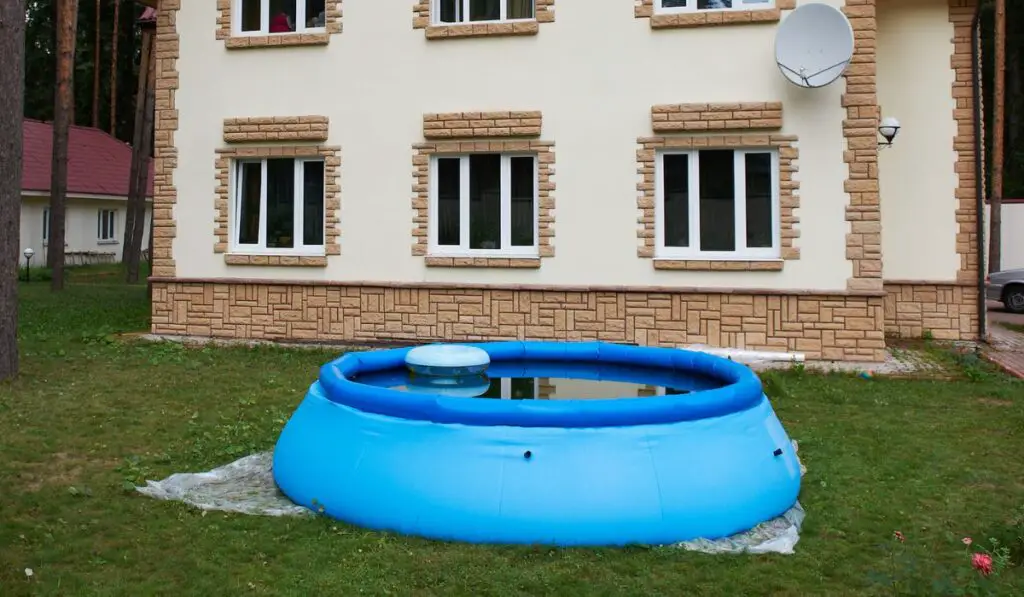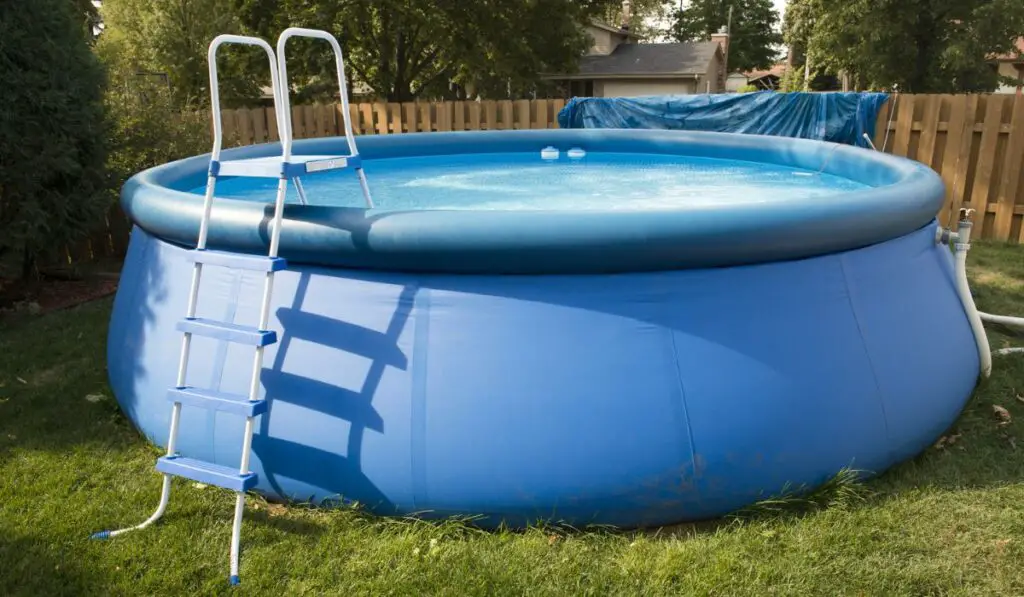If it is not in your budget to install an in-ground or above-ground swimming pool, you may have considered purchasing an inflatable pool in your backyard. Doing so will help you and your family stay cool throughout the warmer months.
Leaving water in an inflatable pool can allow bacteria to grow that can make your family sick. It can also attract mosquitoes that carry dangerous diseases. While you can treat the pool water partially with chlorine tablets, you will still need to empty and refill an inflatable pool often.
Not sure how long you can safely leave water in your inflatable swimming pool? Let’s look at some of the details that can help you decide how long you should leave water in your inflatable pool.
How Long Should You Leave Water in an Inflatable Pool Untreated?

A common question that is asked of those who purchase an inflatable pool for their backyard is how long you should leave untreated water in it. The quick answer to this question is that the water in your pool should be emptied after every use.
The reason for this is mostly because the water is likely untreated which means that it is susceptible to harmful bacteria. This is because when the water has not been treated with specific chemicals, various germs can lead to the growth of bacteria that can cause harm to those exposed to it.
Most experts agree that if you have an inflatable pool and do not plan to add a filter or other chemicals, you are leaving it open to various bacteria. This is an important factor to consider when you choose to purchase this type of pool.
Additionally, to prevent individuals that use the pool from getting sick, once you drain the pool, it is recommended that you then clean it thoroughly and then dry it. After you do this, you may want to allow it to sit outside in the sun to ensure that it is completely dried.
Plus, in many areas of the US, there are mosquitoes which lay their eggs in standing water. Leaving an inflatable pool with untreated water will attract these bugs, many of which can carry the dangerous West Nile Virus which can be passed to humans.
Can You Add Chlorine to an Inflatable Pool?
One of the biggest downsides to having an inflatable pool in your backyard is that if you do not want the water to become contaminated, you will need to either drain and refill it daily or choose to treat it. One of the methods of treating your inflatable pool is to add chlorine to the water.
Most people who have had a swimming pool before know that chlorine is the number one killer of most contaminants. But the question is, can you add chlorine to an inflatable pool, and if so, how do you go about doing it?
Some experts recommend that you add chlorine tablets to your inflatable pool if you do not want to have to drain and refill the water every day. Since chlorine helps to keep bacteria to a minimum, it is the one way that you can keep the water safe for you and your family.
Keep in mind, however, that chlorine tablets alone won’t balance out your pool pH. Therefore while they will allow you to leave the water for a few days, they won’t prevent algae from growing in the pool a few weeks later.
It is also not possible to empty an inflatable pool with chlorine into your grass. You will need to figure out a different way to dispose of the water if you add chlorine tablets to an inflatable pool.
How to Test the Water in an Inflatable Pool
One of the most important things you need to keep in mind when you are adding chlorine tablets to your inflatable pool is that the pH levels should be checked regularly. This is because if the water levels fall above or below the recommended amounts, it is not safe for people to swim in.
To ensure that the water in your inflatable pool is staying at acceptable and safe levels, you will need to ensure that you are testing them regularly. There are several ways you can do this, but keep in mind that you may want to ask the advice of a professional before treating the water in your inflatable pool.
Most of these experts will tell you that you can either purchase test strips(on Amazon) or a digital testing kit to test the water. While both of these ways will keep you apprised of the pH levels in your water, the digital testing kit(on Amazon) is known to be more accurate.
It should be noted that it is important to ensure that you are testing the water in your inflatable pool regularly. This is because you will want to ensure that they stay within the recommended levels to keep you and your family safe.
Overall, if you decide that instead of draining and refilling your pool daily is not something you want to do, you will need to come up with a treatment plan. This plan should include not only adding chlorine to the pool but also testing it regularly to ensure that it is in good condition for all to enjoy.
How to Clean an Inflatable Pool

When it comes to taking care of your inflatable pool, one of the most important things you need to do is to ensure that you are cleaning it regularly. The method you use depends on whether you are draining it daily or using your treatment plan.
If you choose to drain your inflatable pool daily, then you should ensure that you are cleaning it thoroughly. This includes using a brush that is gentle enough for the inflatable pool to clean the sides and bottom. Once you have done that, you will want to make sure to rinse it and dry it completely.
If you have chosen to incorporate a treatment plan by using chlorine tablets and possibly even installing a filter, then you can wait a bit longer to drain the pool completely. This means that the cleaning process you use daily will be done with the water still intact.
To clean an inflatable pool with water in it, you will need to first use a net to remove any debris that may be sitting on the surface. After that, you can then take a gentle brush to clean the sides and the bottom of the pool. Keep in mind that adding a filter to your pool will give you that added cleaning that you will need.
You can also purchase a vacuum for your inflatable pool like you would an in-ground pool, but this can be an expensive option for an inflatable pool that you plan to replace after a single season. There are both manual and automatic pool vacuums available.
Just remember that if you do choose to treat the water of your inflatable pool, you will need to have a plan to dispose of the water that doesn’t include pouring it on your grass and garden, as the chlorinated water could harm your plants.
